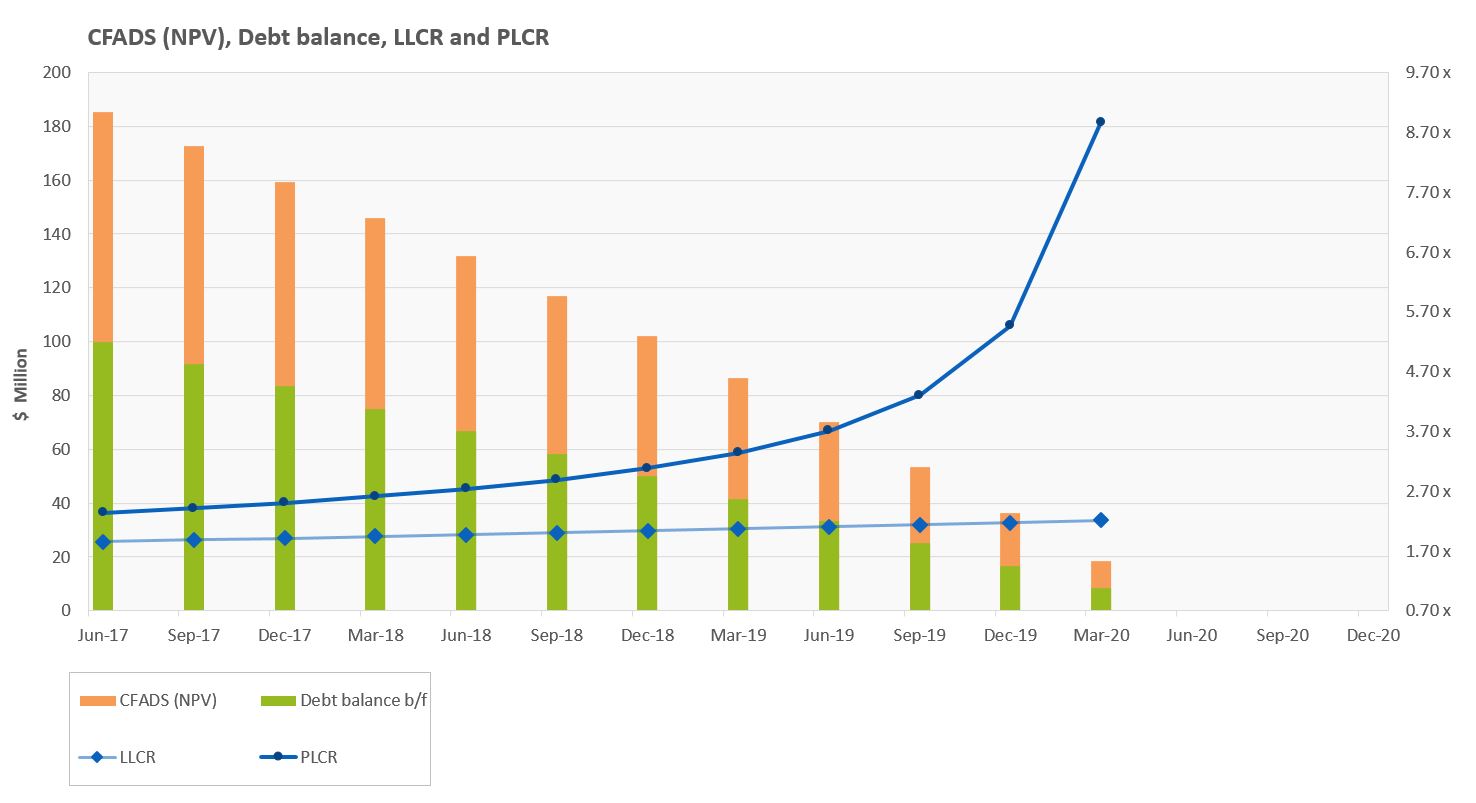Calculating PLCR
Introduction
In this article, we introduce the Project Life Cover Ratio (PLCR) calculation in a project finance financial model. We intend you to read this with the accompanying Excel workbook so you can review the layout of the calculations and the actual formula - rather than just read about it.
If you find this useful and you want to understand more about the intention, interpretation and market nuances of the PLCR and how it is used in debt-sizing ask us about our two day, 100% hands-on, case study based, Project Finance Analysis course, delivered in person by Nick Crawley.
Download Workbook Download PDF Training Courses
Re-capping the LLCR is basically how the ratio of cash available over the life of the loan compares to the total outstanding debt, considering the time value of money. When a project finance lender makes a loan available they need to assess what happens if the loan is not repaid as scheduled, the PLCR takes this into account.
How is the PLCR calculated?
The PLCR is calculated in the same way as the LLCR with the following important notes
- The cashflow being NPV’d extends to the end of the project or to a proxy thereof
- Just because the cashflows cover the ‘Project’ the ratio still ends when the loan does
- The discount factor beyond the life of the loan needs to be purposefully defined
The PLCR formula
Calculate the PLCR using the formula below. It is essentially the same as the LLCR with the important difference that the cashflows used in the NPV extend beyond the life of the loan.


The discount rate to be used is
- t <= Project life = scheduled cost of debt = Interest / debt balance b/f
- t> Project life = A or B or C where
- A = Cost of debt in last period of debt
- B = Cost of debt in last period of debt + default margin
- C = Something significantly higher
For long term infrastructure projects, this doesn’t make too much difference because the tenors maybe long (15-20 years). However, for a 5 year mining project with a 3 year loan life or the late acquisition / refinance late in an assets life the decommissioning cost might not be discounted by as much as the cost of debt or WACC. The logic is that you have to spend the decommissioning costs and if you had to set cash aside to pay for these costs (or cash backed bond / Letter of credit) then the growth of these funds would be 2% or less (return on cash deposits). The point here is to think about it and talk it through with your team or client – especially if you are going to run credit default simulations.
The PLCR is important when…
The PLCR is often added in a Base Case ‘for completeness’ but in projects with negative CFADS beyond the life of the loan it is essential for lenders to understand. These situations occur more often than you might think and when purchasing or refinancing late-life projects it becomes an important part of the valuation. Good examples of when this happens are
- Environmental rehabilitation costs – say for an open-cut mine or a manufacturing plant such as a pulp-mill or palm-oil complex.
- Decommissioning costs – say for a power station or a chemical processing plant where the costs of cleaning up a slag heap or tailings dam outweigh the operating cashflows.
The PLCR is an important down-side loan coverage ratio because if the cashflows are relevant then the loan has not been repaid and the project is in difficulty.
Nick’s cheat sheet
The PLCR is often not the driving metric in a debt sizing exercise and as such does not attract the attention or rigor of the LLCR calculation. The characteristics (and errors) I look for are
- The PLCR < LLCR – if so why? Decommissioning costs?
- The PLCR discount rate beyond the loan life being zero (very common error)
- The PLCR usually looks like a ski-jump towards the end of the project – if not…investigate.
- For really long-life projects the entire project life is not usually used as it’s just too long dated – instead look for a ‘synthetic’ project life. For example a 17 year loan on a 50 year project might have the PLCR calculated over 25 or 30 years.

Summary
The PLCR doesn’t attract as much attention as the DSCR or LLCR – a consequence of this is that the errors that creep in often stay in! The main use is evaluating the back-end risk of a project that has tricky cashflows beyond the life of the loan. Think about what is happening out beyond the life of the loan and the discount rate to apply.
I hope that was useful – smooth and happy modelling!
